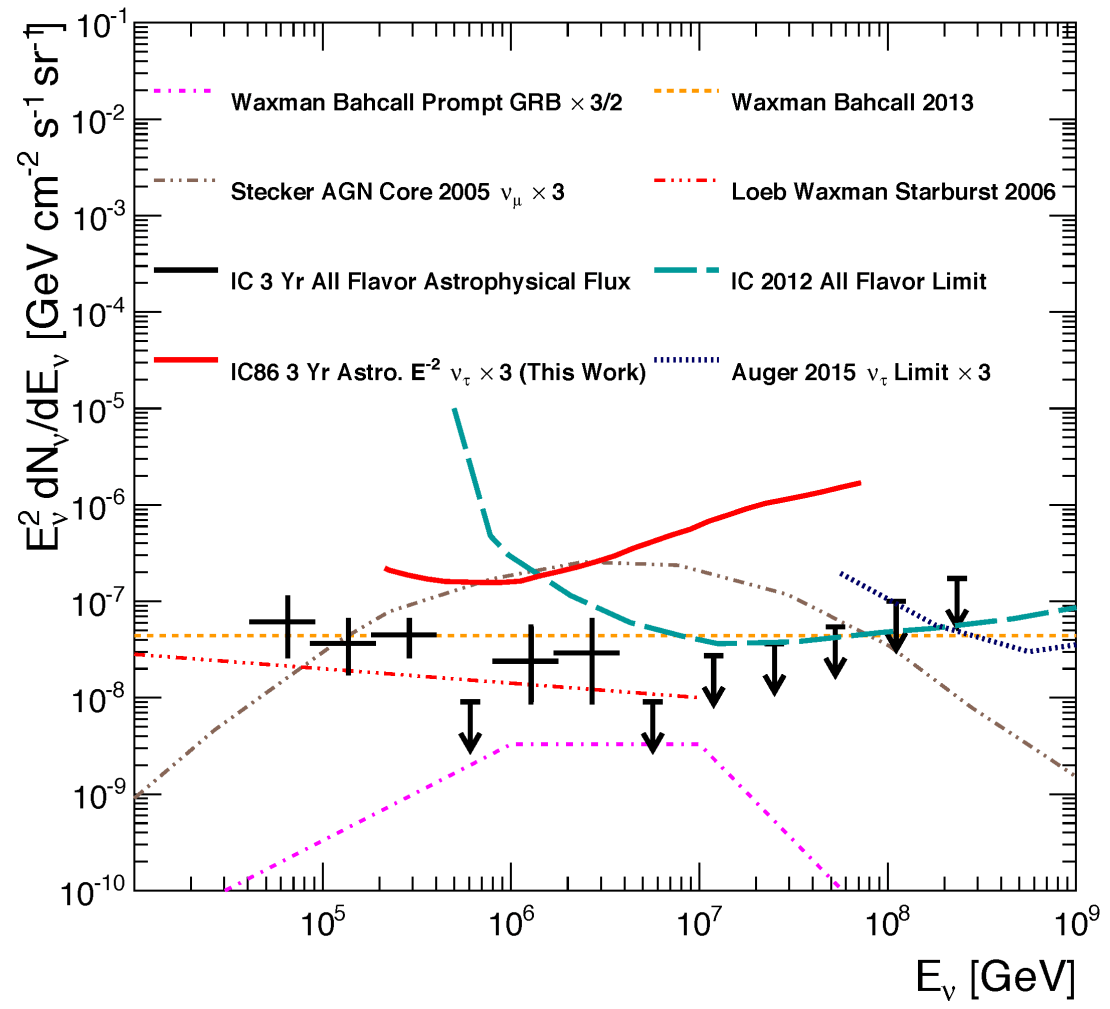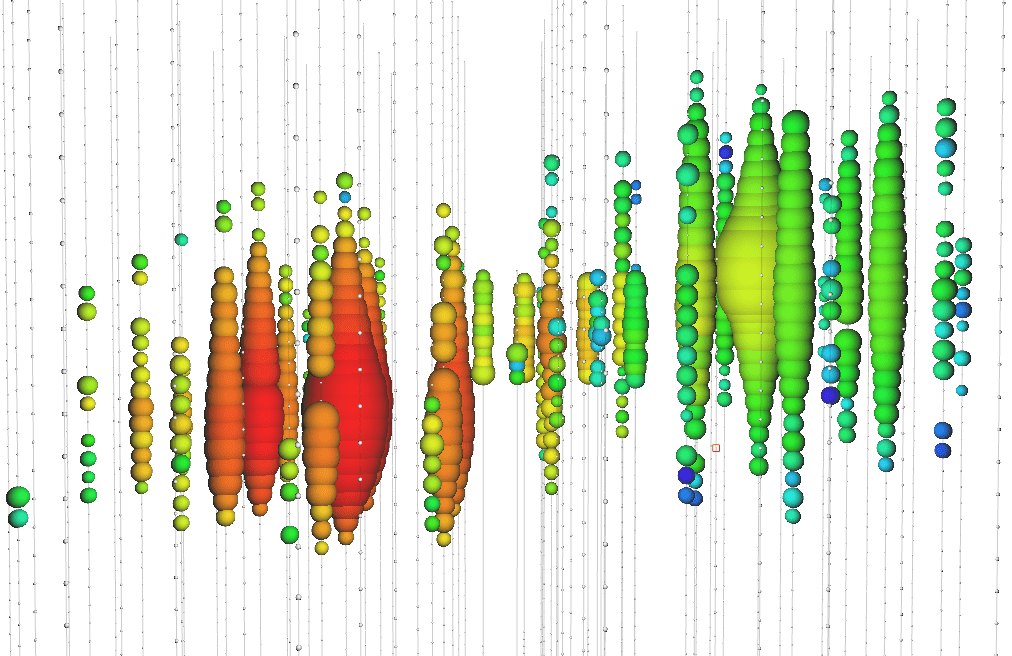Double bang is the intriguing name for an ideal tau neutrino signature. No one has ever seen a high-energy tau neutrino yet, but IceCube is more than eager to observe one for two good reasons. A tau neutrino is a smoking gun signature for neutrinos produced in astrophysical sources. And learning about the exact rate of tau neutrinos is crucial for pinpointing the sources producing those astrophysical neutrinos.
Today the IceCube Collaboration has presented a search for tau neutrinos at energies above 214 TeV that, although it did not find any events, allowed setting upper limits on the astrophysical tau neutrino flux. This search sets limits on tau neutrinos at energies three orders of magnitude lower than the energies reached by previous dedicated tau neutrino searches. And more importantly, the results now submitted to Physical Review D also prove that tau neutrino searches in IceCube are reaching the sensitivity for a potential discovery.

IceCube event displays usually show colorful tracks, produced by cosmic-ray muons or muon neutrinos, and cascades (or showers), mostly produced by electron neutrinos and low-energy tau neutrinos—muon neutrinos can also produce a cascade if their interaction with the ice is mediated by a Z boson. But high-energy tau neutrinos, typically above a few hundred TeV, could be resolved in IceCube as two cascades: the first due to the interaction of the tau neutrino producing a tau lepton, and later the tau decay into a hadron or electron shower.

The average length of tau decay scales with energy, roughly 5 cm/TeV. And only for very high-energy tau neutrinos—above a few PeVs—do we expect to see a stunning double bang event such as the one displayed on the left. However, IceCube sensors, with a precision of a few nanoseconds, can see the double bang event topology before this is captured by the event displays.
IceCube researchers have developed a new technique that can resolve the two cascades as double pulses in the individual IceCube sensors for tau neutrino events with energies between 214 TeV and 72 PeV.

“The most challenging task is to discriminate tau neutrino double pulse events from the very energetic muons hitting the edge of the detector. Those muons make double pulse waveforms via catastrophic energy losses,” says Donglian Xu, one of the corresponding authors of this work and a former member of the IceCube team at the University of Alabama and now a postdoc at UW-Madison.
The search was performed using three years of IceCube data, from May 2011 to May 2014, and resulted in no tau neutrinos, which is compatible with the astrophysical tau neutrino signal expectations, still below one event for this time period. But new data together with independent searches for well-separated cascades have raised IceCube’s hopes in the quest for the first astrophysical tau neutrino.
“Tau neutrinos are the most challenging of the neutrino flavors and remain one of the missing pieces of the puzzle in IceCube’s observation of high-energy astrophysical neutrinos. This search brings us closer to the goal of identifying tau neutrinos in IceCube,” says Dawn Williams, who leads the IceCube team at the University of Alabama and is also a corresponding author of this paper.
+ Info: “Search for Astrophysical Tau Neutrinos in Three Years of IceCube Data,” IceCube Collaboration: M. G. Aartsen et al. Physical Review D93 (2016) 2, journals.aps.org arxiv.org/abs/1509.06212